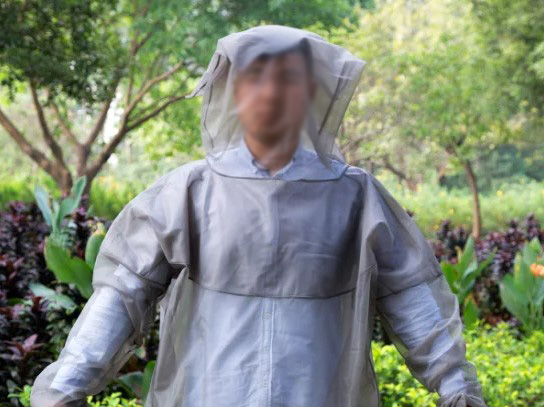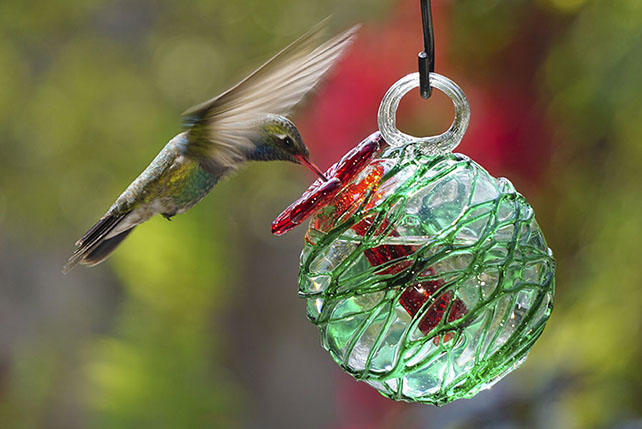As summer wanes and the first signs of autumn appear, a remarkable natural event quietly unfolds across North America: the fall migration of hummingbirds. These tiny birds, barely larger than a thumb, embark on an epic journey that spans thousands of miles, defying the odds and showcasing the resilience of nature. For those of us lucky enough to have hummingbirds visit our gardens, autumn presents a unique opportunity to assist them during this critical time. By providing nutritious nectar in hummingbird feeders, we can play a small yet significant role in their survival.

How Feeding Hummingbirds in Fall Aids Survival
The Marvel of Hummingbird Migration
Hummingbird migration is one of the most extraordinary phenomena in the natural world. In the United States, several species of hummingbirds undertake this perilous journey, each with its own unique migration patterns:
Ruby-throated Hummingbird (Archilochus colubris): The most common species east of the Mississippi, the Ruby-throated Hummingbird migrates from as far north as Canada to Central America, covering distances of up to 3,000 miles. Remarkably, many of these tiny birds fly non-stop over the Gulf of Mexico, a journey of 500 miles, in a single night.
- Rufous Hummingbird (Selasphorus rufus): Known for its fiery orange plumage, the Rufous Hummingbird breeds as far north as Alaska, making it one of the northernmost hummingbird species. In fall, they migrate south to Mexico, with some traveling over 4,000 miles, the longest migration of any hummingbird relative to body size.
Black-chinned Hummingbird (Archilochus alexandri): Found primarily in the western U.S., the Black-chinned Hummingbird migrates from the southwestern states to Mexico, often following a route along the Rocky Mountains and desert regions.
- Broad-tailed Hummingbird (Selasphorus platycercus): This species, commonly found in the Rocky Mountains, migrates to Central America for the winter. They are known for their ability to survive at high altitudes, even during migration.
- Anna’s Hummingbird (Calypte anna): Unlike other species, Anna’s Hummingbird is mostly a resident species, with some populations migrating short distances along the Pacific Coast. However, during the fall, they often move to lower elevations or slightly warmer climates.
The timing of migration varies by species and region, but generally, the migration begins in late August and can continue through October. This mass movement involves millions of birds, all driven by the need to find more hospitable environments as food sources in their breeding grounds dwindle.
Why Feeding Hummingbirds Matters
Hummingbirds have incredibly high metabolisms, with some species consuming up to half their body weight in nectar each day. During migration, their need for energy is even greater. Fat reserves built up before and during migration are crucial for their survival, especially when faced with long flights over inhospitable terrain.
By providing a reliable source of nectar from a hummingbird feeder in your garden, you are offering these birds the fuel they need to continue their journey. This is particularly important in the fall when natural food sources, such as flowers, begin to wane. Hummingbirds rely on these pit stops to rest and refuel, making your backyard an essential part of their migration route.

How to Use a Hummingbird Feeder: Best Practices
To attract and properly care for hummingbirds during their migration, follow these guidelinesfor using your hummingbird feeders:
- Choosing the Right Hummingbird Feeder: Select a feeder that is easy to clean and has red accents to attract hummingbirds. Opt for feeders with multiple feeding ports to accommodate several birds at once. Hummingbird feeders with perches give birds a chance to rest while feeding. Glass feeders are often more durable and easier to clean than plastic ones. A small volume feeder may be best to start with, until you see how many birds you will attract. This will prevent wasting nectar, and encourage you to clean the feeder regularly.
- Preparing Nectar for Your Hummingbird Feeder: The best nectar is homemade and free from harmful additives. Mix 4 parts water to 1 part white granulated sugar and stir until completely dissolved; there is no need to boil the solution. Let the nectar cool before filling the feeder. Extra solution should be refrigerated. Never use honey, artificial sweeteners, or food coloring, as these can be harmful to hummingbirds.
- Maintaining the Cleanliness of Your Hummingbird Feeder: Keeping feeders clean is crucial to prevent the growth of mold and bacteria, which can be fatal to hummingbirds. During the cooler fall months, clean your feeder at least once a week; in warmer weather, clean it every 3-5 days. Disassemble the feeder, wash it thoroughly with hot water, and scrub away any mold with a hummingbird feeder cleaning brush that reaches into the feeder ports. Avoid using harsh chemicals that could leave residues.
- Positioning Hummingbird Feeders: Place the feeder in a location that is safe from predators and offers some shade to slow the fermentation of the nectar. A spot near flowers or shrubs can provide shelter and additional food sources for the birds. Make sure the feeder is hung high enough to be out of reach of cats and other predators.
- How long to Keep Hummingbird Feeders Up: It’s a myth that leaving feeders up will prevent hummingbirds from migrating. Migration is triggered by changes in daylight, not the availability of food. Keep your feeders up until you haven’t seen any hummingbirds for two weeks, ensuring that any late migrants have access to nourishment.
- Preventing Ants, Bees, and Wasps: If ants are a problem, install an ant moat above your feeder. An ant moat is a water-filled vessel that will trap ants before they reach the feeder. The hummingbird feeder is hung from a hook on the bottom of the ant moat. Bees and wasps are not usually a danger, but they may crawl inside feeding ports to reach the nectar and foul the solution. Look for feeders with smaller holes in the ports to discourage these insects.
- Filling Hummingbird Feeders with Rubber Stoppers: Hummingbird feeders with a feeding tube in a rubber stopper at the bottom of the feeder must be filled correctly to prevent leaks. These work on a vacuum principle, so they must be filled completely to prevent the formation of any air pockets--a bit of nectar should squirt out when the stopper is inserted. Partially filling any feeder of this type will cause the nectar to pour through the tube. On very hot days the liquid may heat up and expand, causing some leakage--siting these feeders in sunny spots in warm climates is not recommended.
- Plant Hummingbird Attracting Flowers Nearby: Hummingbirds are attracted to the color red, and prefer blooms with a tubular structure. Planting annuals or tropical plants that are sure to be in flower in late summer such as red salvia, petunias, nicotiana, nasturtiums, verbena, pentas, cardinal vine, cuphea (cigar plant), tithonia (mexican sunflower), zinnias, mandevilla, hamelia (firebush), or russelia in the ground or in a container will help guide them to your feeder.
The Impact of Your Efforts
By feeding hummingbirds during the fall, you are not only enjoying the beauty of these incredible birds but also contributing to their conservation. The habitat loss and climate change challenges that hummingbirds face make every backyard feeder a vital resource. Your efforts, combined with those of countless others, create a network of safe havens that support these tiny travelers on their long, perilous journeys.















